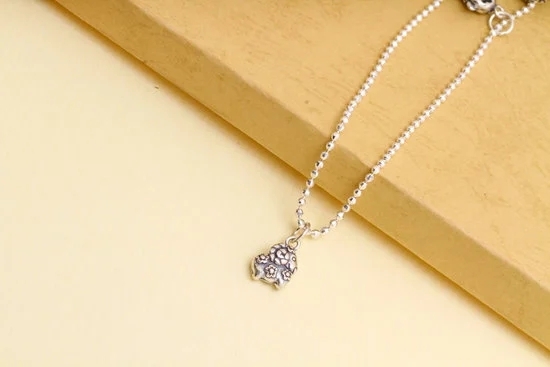Diamond jewelry has always held a special allure that captivates people around the world. From dazzling engagement rings to delicate necklaces and elegant earrings, diamonds have become synonymous with luxury and status. But with such a wide range of diamond jewelry available in the market, one may wonder, how much does it actually cost? In this article, we will dive into the world of diamond jewelry prices and explore the various factors that contribute to its cost.
The significance of diamonds as a symbol of luxury and prestige cannot be understated. These timeless gemstones have been adored for centuries, representing love, devotion, and success. Whether it’s a diamond engagement ring or a beautiful pendant, owning diamond jewelry is often seen as a statement of wealth and social standing.
However, the price of diamond jewelry varies greatly depending on several key factors. Known as the 4Cs – carat weight, cut quality, color grade, and clarity grade – these grading characteristics play a pivotal role in determining diamond value and pricing. Additionally, rarity and demand also influence the cost of diamond jewelry.
With so many different types of diamond jewelry available in the market today – from engagement rings to necklaces, earrings to bracelets – understanding their price range can be overwhelming. The cost can vary based on factors such as type of metal used (gold, silver, platinum) in combination with diamonds. This article will provide insight into the price range for various types of diamond jewelry and offer examples to give readers an idea of what to expect.
As we explore further into this topic, keep in mind that comparing prices from different retailers and consulting with trusted jewelers is crucial when purchasing diamond jewelry. Additionally, considering alternative options like lab-grown diamonds or other gemstones can offer more affordability without compromising beauty or quality.
By understanding these key points about diamond jewelry pricing, readers will be equipped to make informed decisions when purchasing or investing in these precious gems. So let’s delve into the intricate world of diamond jewelry prices and discover how much it really is.
Factors Affecting Diamond Jewelry Prices
When it comes to determining the price of diamond jewelry, several factors play a crucial role. Understanding these factors can help consumers make informed decisions and ensure they are getting the best value for their money. The four Cs of diamond grading – carat weight, cut, color, and clarity – are essential in assessing a diamond’s quality and ultimately affect its price.
- Carat weight: Carat weight refers to the size or mass of a diamond. Generally, the higher the carat weight, the more valuable and expensive the diamond becomes. Larger diamonds are rarer and more desirable, which makes them command higher prices.
- Cut: The cut of a diamond determines its brilliance and sparkle. A well-cut diamond reflects light beautifully, making it more visually appealing. Diamonds with excellent or ideal cuts will be priced higher than those with fair or poor cuts.
- Color: The color of a diamond is graded on a scale from D (colorless) to Z (light yellow or brown). Colorless diamonds are considered more valuable as they allow more light to pass through, resulting in better sparkle and fire.
- Clarity: Clarity refers to the presence of internal flaws (inclusions) or external blemishes on a diamond. Flawless diamonds with no visible inclusions are rare and highly valued. However, small inclusions typically do not affect a diamond’s beauty unless they are easily noticeable under magnification.
While the four Cs significantly impact the price of diamond jewelry, other factors also come into play:
- Rarity: Some fancy colored diamonds such as pink or blue can be exceptionally rare, increasing their market value significantly. Similarly, certain types of diamonds may have distinct attributes, such as natural black diamonds or rare diamond cuts.
- Demand: The law of supply and demand affects the price of any commodity, including diamonds. If a particular type of diamond jewelry is trending or in high demand, its price may increase accordingly. This can be influenced by factors such as celebrity endorsements or fashion trends.
By considering these factors, buyers can make well-informed choices based on their preferences and budget when purchasing diamond jewelry. It’s essential to remember that each factor contributes to the overall beauty and value of a diamond and should be carefully evaluated in conjunction with one another. Ultimately, finding the right balance between these factors allows consumers to select diamond jewelry that meets their desired criteria within their specified price range.
Price Range for Different Types of Diamond Jewelry
Diamond jewelry comes in various forms, from engagement rings to necklaces, earrings, and bracelets. When it comes to purchasing diamond jewelry, the price can vary significantly depending on factors such as the type of jewelry and the materials used. Here is a breakdown of the price range for different types of diamond jewelry:
Engagement Rings
Engagement rings tend to be one of the most expensive types of diamond jewelry due to their significance and the amount of precious metal and diamonds involved. The cost can vary widely based on factors like carat weight, cut, color, clarity, and the type of metal used for the setting. For example:
- A simple solitaire engagement ring with a small diamond in white gold or platinum can range from $1,000 to $5,000.
- A more elaborate engagement ring with a larger center stone surrounded by smaller accent diamonds in a custom-designed setting can cost anywhere from $10,000 to $50,000 or more.
Necklaces
Diamond necklaces come in a variety of styles such as pendants, chokers, and statement pieces. The price range for diamond necklaces depends on factors like the size and quality of diamonds used, as well as the type of metal chain. Here are some examples:
- A delicate pendant necklace with a small solitaire diamond in sterling silver or 10k gold may range from $100 to $500.
- A luxurious diamond choker necklace with multiple stones and high-quality metals like 14k gold or platinum can cost anywhere from $2,000 to $10,000.
Earrings
Diamond earrings can add elegance and glamour to any outfit. The price range for diamond earrings varies based on factors such as carat weight per earring (total carat weight), diamond quality, design complexity, and metal type. Here are a few examples:
- A pair of classic diamond stud earrings with smaller diamonds in 14k gold or white gold settings may be priced between $500 to $3,000.
- Diamond dangle earrings with larger stones and intricate designs set in platinum or 18k gold can range from $5,000 to $20,000 or more.
It’s important to note that the price ranges provided above are just general estimates and can vary significantly based on individual preferences and market conditions. Always consult with reputable jewelers or retailers for accurate price information related to specific styles and designs of diamond jewelry.
Popular Diamond Jewelry Brands and Their Price Points
Brand Reputation and Craftsmanship
When it comes to diamond jewelry, the brand name can play a significant role in determining price points. Well-known brands often command higher prices due to their reputation for quality and craftsmanship. These brands have established themselves in the industry over time, earning the trust of consumers through their consistent delivery of exceptional pieces.
In addition to brand reputation, the level of craftsmanship also impacts the cost of diamond jewelry. Brands that invest in highly skilled artisans and utilize meticulous techniques will naturally have higher price points. The expertise and attention to detail put into each piece contribute to its value and exclusivity.
Examples of Price Points
To illustrate the range of options available, let’s take a look at some popular diamond jewelry brands and their corresponding price points.
- Tiffany & Co.: As one of the most renowned names in the industry, Tiffany & Co. offers a wide range of diamond jewelry. Their engagement rings start at around $2,000 for a simple solitaire setting with a small diamond. More elaborate designs can reach well into the five – or six-figure range.
- Cartier: Another luxury brand known for its exquisite jewelry, Cartier offers a variety of diamond pieces across different categories. For example, a classic Love bracelet featuring diamonds can start around $10,000, while an elaborate necklace adorned with large diamonds can easily exceed $100,000.
- Pandora: While not traditionally considered a high-end brand like Tiffany & Co. or Cartier, Pandora has gained popularity with its versatile collections that cater to various budgets. A simple sterling silver ring with a small diamond may cost around $100, making it more accessible to those seeking affordable options without compromising style.
It is important to note that these are just examples; prices for diamond jewelry from different brands can vary widely based on factors such as design complexity and materials used.
Considerations When Purchasing
When considering diamond jewelry from different brands, it is crucial to strike a balance between your desired quality and the budget you have in mind. Researching various brands and comparing prices will give you a better understanding of what lies within your reach. It is also advisable to seek advice from trusted jewelers or consultants who can guide you through the purchasing process and help ensure that you get the best value for your investment.
Remember, while popular brand names often come with a certain level of prestige, there are also reputable independent jewelers who offer stunning diamond jewelry at relatively lower price points. By exploring all available options and understanding the factors influencing prices, you can find the perfect piece to fit both your style preferences and budget constraints.
Buying Diamond Jewelry
Tips for Shopping Within a Budget
When it comes to buying diamond jewelry, it’s essential to have a clear budget in mind. With the wide range of options available, determining your budget will help guide your choices and prevent overspending. To shop within your budget, consider the following tips:
- Set a Realistic Budget: Take into account your financial situation and determine how much you are willing to spend on diamond jewelry. It’s important to be realistic and avoid stretching yourself too thin financially.
- Compare Prices: Don’t settle for the first price you come across. Take the time to compare prices from different retailers and online platforms. By doing so, you can ensure that you’re getting the best value for your money.
- Consult Trusted Jewelers: Seeking advice from knowledgeable jewelers is crucial when making such an important purchase. They can guide you through the process, educate you about different options, and help you find quality diamond jewelry within your budget.
Recommended Places to Shop
Finding reputable stores or online platforms that offer quality diamond jewelry at reasonable prices can be challenging. However, there are a few places that consistently provide customers with a positive shopping experience:
- Reputable Online Platforms: Websites like Blue Nile and James Allen have gained popularity for their extensive selection of diamond jewelry at competitive prices. These platforms often offer detailed product information and customer reviews, allowing buyers to make informed decisions.
- Local Jewelers: Visiting local jewelers gives customers the opportunity to see diamond jewelry up close and receive personalized assistance from experienced professionals. Local jewelers may also have exclusive deals or discounts that can help you stay within your budget.
- Estate Sales or Auctions: Estate sales or auctions present unique opportunities to find one-of-a-kind vintage or antique diamond jewelry pieces at more affordable prices. These events often feature diverse selections and may include items passed down through generations.
The Importance of Certified Diamonds
When purchasing diamond jewelry, it is crucial to prioritize certified diamonds. Diamond certifications are issued by reputable grading agencies, such as the Gemological Institute of America (GIA) or the American Gem Society (AGS). Here’s why buying certified diamonds is essential:
- Assurance of Quality and Authenticity: Certification guarantees that the diamond has undergone rigorous grading and evaluation by experts. It ensures that you are getting a genuine, natural diamond with accurate information about its quality characteristics.
- Value Preservation: Certified diamonds hold their value better over time compared to non-certified stones. Having proper documentation and an unbiased assessment of your diamond’s qualities can ultimately protect your investment.
- Easy Comparison: Certified diamonds come with a detailed grading report that allows you to assess their quality objectively. This helps you make informed comparisons between different stones and ensure you’re getting the best possible deal for your budget.
By prioritizing certified diamonds, buyers can have peace of mind knowing they are investing in high-quality jewelry that accurately represents its value.
The Value of Certified Diamonds
When purchasing diamond jewelry, one of the most crucial factors to consider is whether the diamonds are certified. Certified diamonds offer several advantages and provide peace of mind for consumers. By understanding the importance of certified diamonds, shoppers can make informed decisions and ensure they are getting genuine, high-quality stones.
Certification plays a significant role in assessing diamond quality and authenticity. A certified diamond has been examined and graded by an independent gemological laboratory. These laboratories use standardized grading systems to evaluate the four Cs of diamond grading: carat weight, cut, color, and clarity. The grading report issued by the laboratory provides detailed information about these characteristics, along with other important factors such as symmetry, fluorescence, and polish.
Reputable diamond grading agencies like the Gemological Institute of America (GIA) or the American Gem Society (AGS) are widely recognized in the industry for their strict standards and unbiased evaluations. Their reputation ensures that certified diamonds have been thoroughly assessed according to rigorous criteria. As a result, certified diamonds hold a higher value compared to non-certified ones.
| Factors | Certified Diamonds | Non-Certified Diamonds |
|---|---|---|
| Diamond Quality Assurance | Guaranteed quality based on standardized grading systems | Quality claims may be subjective or unreliable |
| Increased Market Value | Certification enhances resale value as it assures buyers of quality | Resale potential may be lower due to uncertainty about quality |
| Confidence in Purchase | Buyers have assurance that they are getting what they pay for | Greater risk of purchasing diamonds of lower quality or fraudulently treated stones |
Certified diamonds offer a level of confidence in the purchase, ensuring that buyers are receiving the quality they desire. When considering diamond jewelry, it is essential to factor in the additional cost associated with certification. Although certified diamonds tend to be more expensive, their value and peace of mind make them a worthwhile investment.
Unconventional Alternatives to Traditional Diamond Jewelry
Diamonds have long been considered the epitome of elegance and luxury in the world of jewelry. However, not everyone can afford the high price tags associated with diamond jewelry. Fortunately, there are several unconventional alternatives to traditional diamond jewelry that offer affordability without compromising style.
One popular alternative to natural diamonds is lab-grown diamonds. These diamonds are created in a controlled laboratory environment using advanced technology that replicates the natural process of diamond formation. Lab-grown diamonds have the same chemical composition and physical properties as mined diamonds, making them an ethical and sustainable choice. Additionally, lab-grown diamonds are typically priced around 30-40% less than their natural counterparts, allowing consumers to get a bigger and more dazzling stone for their budget.
Another option for those seeking affordable diamond-like jewelry is cubic zirconia (CZ). CZ is a synthesized crystal that closely resembles a diamond in appearance but at a fraction of the cost.
These man-made gemstones are durable and can be cut to resemble various diamond shapes, providing plenty of options for engagement rings, earrings, necklaces, and bracelets. It’s important to note that CZ may not have the same durability as a natural diamond or lab-grown diamond, so it’s essential to handle and care for these pieces accordingly.
Moissanite is another excellent alternative to traditional diamond jewelry. Discovered more than a century ago by French scientist Henri Moissan, moissanite is created from silicon carbide crystal. It exhibits exceptional brilliance and fire comparable to that of a diamond while being significantly more affordable. Furthermore, moissanite has remarkable resistance to heat and scratches, making it suitable for everyday wear.
In addition to these alternatives, colored gemstones like sapphires, emeralds, and rubies can also be used in lieu of traditional diamonds. These gemstones offer vibrancy and uniqueness at various price points depending on factors such as color intensity, clarity, cut quality, and carat weight. Colored gemstone jewelry can add a pop of color and individuality to any ensemble, making it an excellent choice for those looking for something different from the traditional diamond look.
It’s clear that there are several unconventional alternatives to traditional diamond jewelry that can provide affordable options without sacrificing beauty or style. Whether it’s lab-grown diamonds, cubic zirconia, moissanite, or colored gemstones, these alternatives offer a range of prices and styles to suit individual preferences and budgets. Jewelry lovers now have more choices than ever before when it comes to finding unique and affordable pieces that still capture the allure of traditional diamond jewelry.
| Alternative | Price Range |
|---|---|
| Lab-grown Diamonds | 30-40% less than natural diamonds |
| Cubic Zirconia | A fraction of the cost of natural diamonds |
| Moissanite | Significantly more affordable than natural diamonds |
| Colored Gemstones | Varying price ranges depending on factors such as color intensity, clarity, cut quality, and carat weight. |
Conclusion
In conclusion, diamond jewelry holds a unique allure that captivates people around the world. Its significance as a symbol of luxury and status cannot be ignored. Throughout this article, we have explored the various factors that affect the price of diamond jewelry, including the 4Cs of diamond grading, rarity, demand, and the type of metal used. Understanding these factors is crucial when considering purchasing diamond jewelry.
When it comes to the price range for different types of diamond jewelry, it can vary greatly depending on numerous factors. Engagement rings tend to be on the higher end of the price scale due to their significance and intricate designs. Necklaces, earrings, and bracelets also have a range in prices based on their style and intricacy. The type of metal used in combination with diamonds also plays a role in determining the cost.
Popular diamond jewelry brands contribute to variations in price as well. Well-known brands often come with an added level of reputation and craftsmanship that can drive up the cost. However, there are also reputable online platforms and physical stores where quality diamond jewelry can be found at reasonable prices by comparing prices from different retailers.
Furthermore, it is essential to note the value of certified diamonds. Purchasing certified diamonds ensures authenticity and provides assurance regarding quality. Reputable grading agencies play a significant role in assessing diamond quality and determining their worth. It is important to understand the difference between certified and non-certified diamonds when considering their value.
Lastly, for those looking for more affordable options or unconventional alternatives to traditional diamond jewelry, alternative gemstones such as lab-grown diamonds, cubic zirconia, moissanite, or colored gemstones are gaining popularity due to their lower price points compared to natural diamonds.
Frequently Asked Questions
How much does real diamond jewelry cost?
The cost of real diamond jewelry can vary significantly depending on various factors such as the carat weight, cut, clarity, and color of the diamond, as well as the overall design and craftsmanship of the piece. While small diamonds or simpler designs may be more affordable, larger diamonds with higher quality characteristics can be quite expensive.
Additionally, factors such as brand reputation and market demand also contribute to the cost of diamond jewelry. On average, diamond jewelry prices can range from a few hundred dollars to several thousand or even millions.
What is a 1 carat diamond worth?
The value of a 1 carat diamond depends on several factors including its cut, clarity, color, and overall quality. Within the category of 1 carat diamonds alone, there can be significant price differences due to variations in these factors. For instance, a 1 carat diamond with excellent cut grade, high clarity, and colorless appearance will generally have a higher value compared to one with lower quality grades.
Furthermore, different jewellers or suppliers may also have varying pricing structures based on their own overhead costs and profit margins. As a result, it is challenging to provide an exact worth for a 1 carat diamond without considering all these elements.
Is diamond jewelry expensive?
Diamond jewelry is commonly associated with being expensive due to its rarity and desirability; however, it is important to note that not all diamond jewelry is exorbitantly priced. The cost of diamond jewelry varies greatly based on factors mentioned earlier such as the size and quality of the diamonds used along with other variables like metal type and overall design complexity.
While some pieces may be considered luxurious and come with hefty price tags due to their high-quality materials or renowned brands associated with them, there are also more affordable options available that feature smaller diamonds or alternative metals which reduce the overall cost. Ultimately, whether diamond jewelry is deemed expensive or not depends on individual preferences and budgets while exploring different offerings within the market’s wide price range.

Welcome to my jewelry blog! My name is Sarah and I am the owner of this blog.
I love making jewelry and sharing my creations with others.
So whether you’re someone who loves wearing jewelry yourself or simply enjoys learning about it, be sure to check out my blog for insightful posts on everything related to this exciting topic!





